Skaters Take Action for Rio Sul Bowl – Brasil
In Rio, skateparks are in extremely bad conditions. We have, for a Brazilian
average, a considerable number of pools, banks and street areas built since the 70’s.
Almost every one of those is still there, which is very good. We do have old school
places and more recent ones as well, which means diversity of ‘artificial’ terrain.
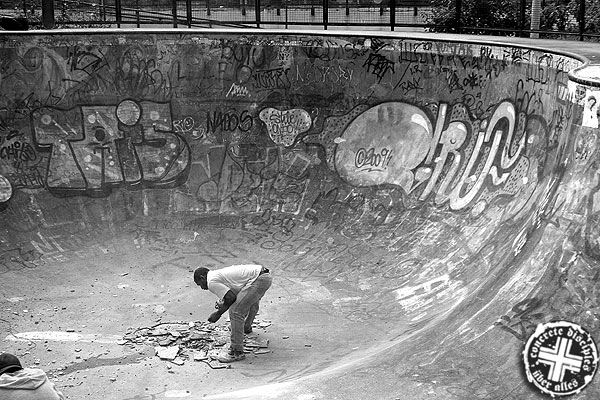
Photo by Tio Verde
Brazil is a beautiful land of huge dichotomies. Very rich and very poor, very conservative and totally freaked out, and so on, all at the same time. In Rio de Janeiro, more specifically, we have a particular situation regarding contrasts: Rio, the state where Brazil’s capital used to be, and before that, the place where Portuguese’s empire had it’s capital, had suffered an astonishing investment evasion since 1960, when the capital of the republic was transferred from Rio to Brasília, a city built from scratch and far away from Rio. Combined with other factors, the investments in every part of Rio’s infrastructure was diminished drastically. Nowadays the city has very decadent, hospitals, chaotic public transportation and, of course, bad pavement. It is no different regarding public places for skateboarding, for sure.
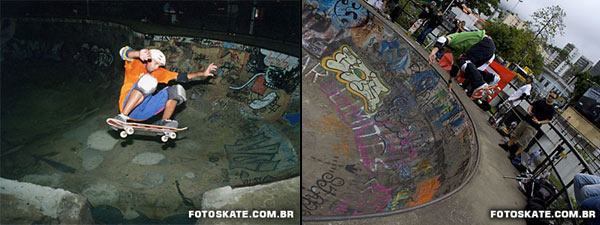
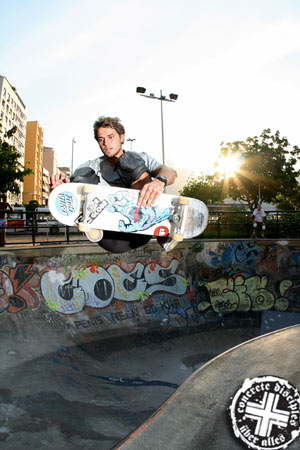
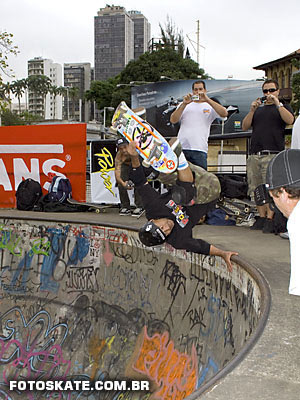
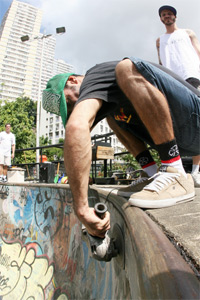
In Rio, skateparks are in extremely bad conditions. We have, for a Brazilian average, a considerable number of pools, banks and street areas built since the 70’s. Almost every one of those is still there, which is very good. We do have old school places and more recent ones as well, which means diversity of ‘artificial’ terrain. In south zone boroughs, close to the ocean, there are two big bowls: Arpoador, and Rio Sul. Arpoador, a dream-like-spot, on the top of a hill next to the ocean (pretty much as Bondi Beach, Australia) was completely abandoned until last summer, when the project ‘fix to ride’ brought it back (did not fix the imperfections of the bowl but made it skatable again). On the other hand, Rio Sul, a very well constructed bowl, in a not so nice place (it’s placed between two highways and a shopping center) was in poor conditions as well, but the place is so classic and has so nice curves, that was impossible to simply stop making sessions there. Recently, the surface was so rough that every piece of gear wore out instantly: wheels, shoes, pads, skin and bones as well. Actually it was better not to use pads. Run, when you missed a trick was much better idea than knee slide (It wouldn’t slide dude!). This bowl went from nice-and smooth-well-constructed-pool to raw-skate-punk-spot in almost 20 years of existence and no maintenance. In Rio, the air humidity and abrasion because of the ocean, forests and carbon monoxide, destroys surfaces pretty fast (real rainy tropical weather) so the need of maintenance is even bigger. We don’t have too many parks in the municipality of Rio. Not even close to this boom of parks seen in USA. From time to time, and usually strategically placed by politicians trying to get votes, a new park project pops up, but the previous one don’t ever get proper maintenance. A shame. Consequently, us, skateboarders, must move our asses and make something. That’s what just happened in Rio Sul.
After looking for feedback in the city’s major and as well with the shopping center, which was responsible for the square where the bowl is located, we realized that bureaucracy would be huge. We would wait a lot to have something done and the path wasn’t so clear. So the strategy was to do something with our hands and, at the same time turn the situation visible through the media and local federation and association in order to get support from public funds via formal requirement.
Our idea was to fix some holes, polish the surface, which was totally rough, and give paint finishing over all the area including platform. The coping needed some attention too, but demanded much more money than we had. We simply cleaned it, and fixed it where it was loose. Altogether it took more than 90 liters of paint and sweat, hundreds of sandpapers and machines that were available, resin, pigments, beer, and of course, concrete, to get things done. We usually had a session and get to work after it. We’d spend hours and hours through the night. Pedro Tibau, Zunga, Marinho, Azul, Bartolo, Wilson, Pierre, Come Rato, Bozo and many other locals shared all material and commitment to work. The consequences were seen instantly. More skaters showed up day after day. We earned more respect from the street people who often pissed and shit inside the bowl (not as retaliation to skaters, but because they do not have a proper place to shit and piss! Actually it still happens, just less frequently than before) and people in general, non-skaters, who started to use the place again, just because it became a nice place to be. From the government, until now, we managed to get support from the Public lightning Co. who repaired the already existing system, making the night sessions possible again. The sessions were documented by Tio Verde and Thiago Cambará (photographers) during the maintenance.
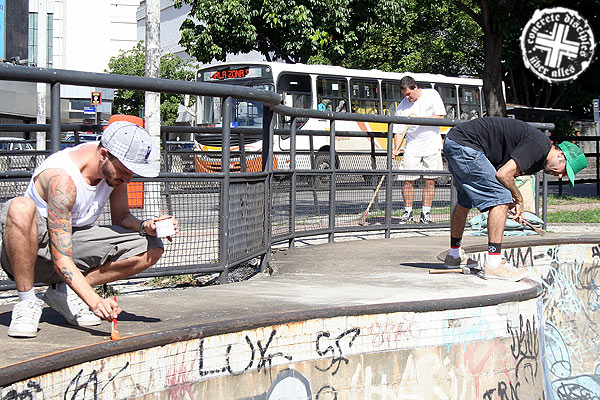
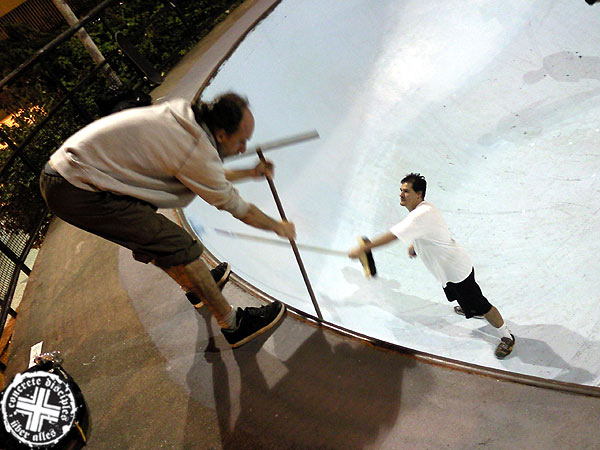
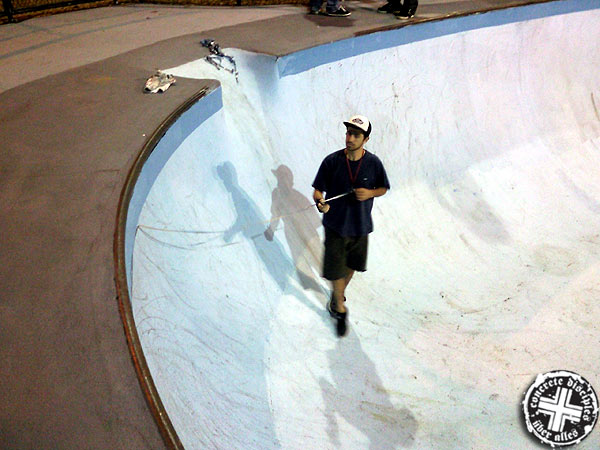
Compared to what we see in Internet and mags in first world countries, Rio Sul is now still a pretty rough bowl, even after our efforts. The bowl actually needs a totally new surface and coping parts. But, above all, we could share the experience, make the place better and open the path for further initiatives whether they come from skaters or public and private institutions. The skaters feel stronger, and more united. Spreading this seed is also part of the mission!

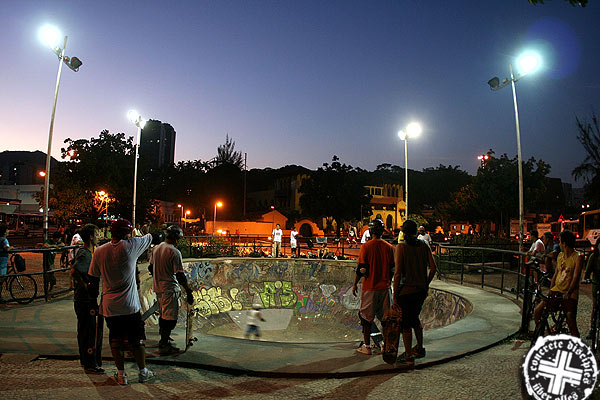
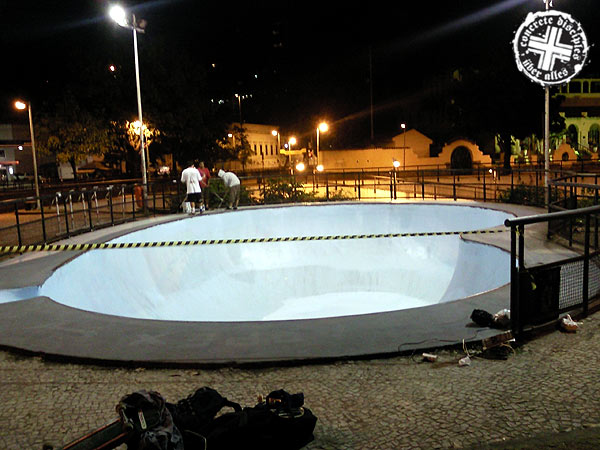
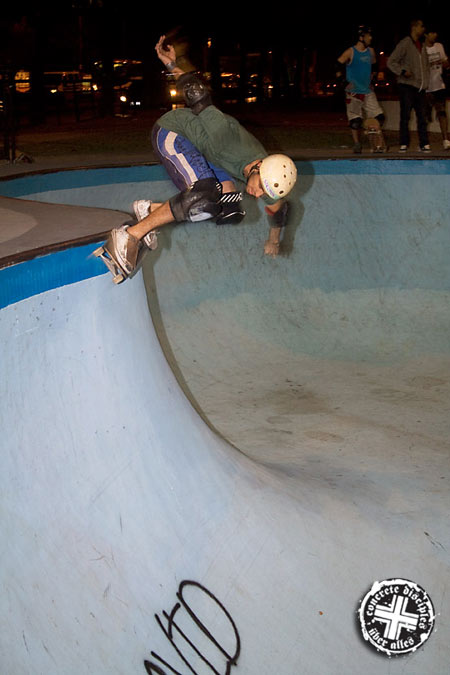
Rio as a city needs a proper long-term plan regarding skateparks maintenance. This action shows how strong and dedicated we can be, as skaters and citizens, to get things done. We are 4 million skateboarders in Brazil according to a census made last summer (requested by CBSKA, the national confederation) and we must organize ourselves to achieve this goal: good skateboarding conditions in Rio. Just after this action, Lagoa’s banks locals did the same with the perfect banks we have there next to the lake, in partnership with Rio Sul locals and a very nice contest run in early August, bringing it back to the scene. The situation is pretty much the same. The place need a total refurbishment, we just started the movement. The city will have the unique chance to host the soccer world cup in 2014 and the Olympic games in 2016. Many investments are in target for the next half-decade, so it’s a very good chance to request a proper attitude from our administrators to repair and rebuild with quality our public skateparks.
Something good is happening in Rio’s skateboarding scene right now. Let’s see how long it lasts.

